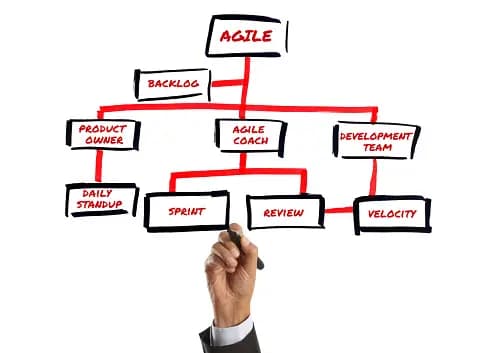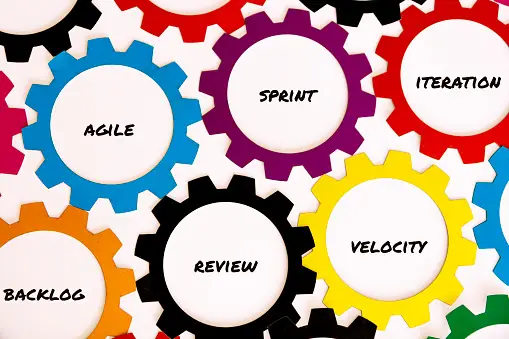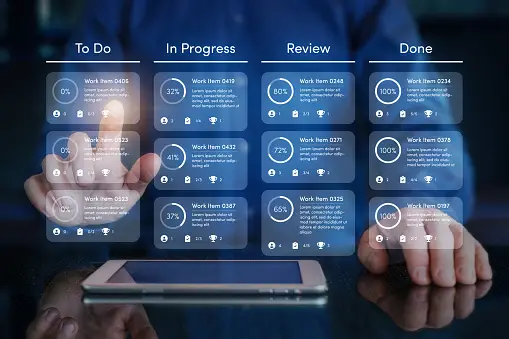
Agile Development: How to Stay Flexible and Efficient in Your Startup Journey
Introduction
In the rapidly evolving startup landscape, the ability to swiftly adapt and operate efficiently is crucial for achieving success. Agile development methodologies offer a framework to navigate the uncertainties of the startup journey while maximizing productivity and adaptability. This blog explores how startups can leverage Agile principles to stay flexible and efficient in their development process.
Staying Flexible and Efficient in Your Startup Journey
Keys | Benefits and Importance |
|---|---|
Iterative Development Cycles | Accelerated Time-to-Market |
Embracing Change as an Opportunity | Enhanced Adaptability to Customer Needs |
Cross-Functional Collaboration | Continuous Improvement and Innovation |
Continuous Feedback Loops | Optimal Resource Utilization |
Agile Project Management Practices | Improved Team Collaboration and Morale |
Understanding Agile Development
Agile development comprises a collection of principles and methodologies focused on delivering software of superior quality through iterative and incremental processes. It emphasizes collaboration, adaptability, and customer feedback throughout the development lifecycle.

Business Model Flexibility in Startups
To maintain adaptability, startups must have the capacity to adjust their business model when circumstances demand. This task poses challenges, demanding a high level of introspection and the willingness to acknowledge mistakes. Additionally, startups must possess a well-defined objective, outlining their aspirations and goals clearly.

According to a study conducted by Gartner, 72% of companies are giving precedence to flexibility in their budgeting procedures to address disruptions and evolving requirements. This emphasis naturally leads to expedited decision-making driven by data.

Startup Efficiency Through Agile Methodologies

Lean Startup Practices
Lean startup practices advocate for building minimum viable products (MVPs) to quickly validate ideas and gather feedback from users. This approach minimizes waste and accelerates learning, allowing startups to iterate rapidly and efficiently.
Example: Dropbox famously utilized lean startup principles by releasing a simple video demonstration to gauge interest before building the product, validating its market demand.
Scrum Methodology
Scrum is a popular Agile framework that divides work into small, manageable chunks called sprints. It promotes regular inspection and adaptation, fostering transparency and collaboration within cross-functional teams.

Research Data: According to a survey by Scrum.org, 56% of organizations reported increased productivity after adopting Scrum.
Steps to Implement Agile in Your Startup

Educate Your Team:
Ensure everyone understands Agile principles and their role in the development process.
Define Clear Goals:
Establish measurable objectives to guide your Agile implementation.
Build Cross-Functional Teams:
Create teams with diverse skills to foster collaboration and problem-solving.
Embrace Iterative Development:
Break down projects into smaller increments to deliver value quickly and receive timely feedback.
Encourage Continuous Improvement:
Regularly review and adapt your processes to optimize efficiency and effectiveness.
Principles of Agile Development: How to Stay Flexible and Efficient in Your Startup Journey

Customer Collaboration:
Engage customers regularly for feedback, ensuring the product meets their evolving needs.
Adaptability:
Embrace change throughout the development process, adjusting goals and strategies as necessary.
Iterative Approach:
Break down projects into small, manageable tasks, allowing for continuous improvement and quick delivery of value.
Cross-Functional Teams:
Foster collaboration among diverse skill sets, enabling faster problem-solving and innovation.
Transparency:
Maintain open communication channels within the team and with stakeholders to ensure everyone is informed and aligned.
Continuous Improvement:
Regularly reflect on processes and outcomes, seeking ways to optimize efficiency and effectiveness.
Embrace Uncertainty:
Accept that not all requirements can be known upfront, allowing for flexibility and creativity in finding solutions.
Focus on Delivering Value:
Prioritize tasks based on their impact on the customer, delivering tangible results with each iteration.
Self-Organizing Teams:
Empower teams to make decisions autonomously, promoting ownership and accountability.
Feedback Loop:
Establish mechanisms for gathering and acting upon feedback quickly, driving rapid iteration and improvement.
Technical Strategies for Agile Development in Startups

Continuous Integration and Continuous Deployment (CI/CD)
Example: Implement automated testing and deployment pipelines to ensure that code changes are integrated and deployed quickly and consistently.
Microservices Architecture
Example: Break down the application into smaller, loosely coupled services, allowing teams to work independently and deploy updates more frequently.
Containerization with Docker
Example: Utilize Docker containers to package applications and dependencies, enabling consistent deployment across different environments and improving scalability.
Infrastructure as Code (IaC)
Example: Use tools like Terraform or AWS CloudFormation to programmatically define and provision infrastructure resources, enabling reproducible and automated infrastructure setups.
Test-Driven Development (TDD)
Example: Write tests before writing code to ensure that new features meet requirements and prevent regressions, promoting code quality and maintainability.
Feature Flags
Example: Incorporate feature flags to enable/disable features dynamically in production, allowing for controlled rollouts and experimentation without disrupting users.
Agile Project Management Tools
Example: Leverage tools like Jira, Trello, or Asana to manage and track tasks, user stories, and sprints, facilitating collaboration and transparency within the team.
Monitoring and Logging
Example: Implement robust monitoring and logging solutions to track application performance, detect issues, and troubleshoot errors in real time.
Cloud-Native Development
Example: Adopt cloud-native technologies like serverless computing or managed services to offload infrastructure management tasks and focus on building and delivering value.
Pair Programming and Code Reviews
Example: Encourage pair programming sessions and regular code reviews to promote knowledge sharing, improve code quality, and catch bugs early in the development process.
By embracing these technical strategies, startups can enhance their agility, streamline their development workflows, and maintain high levels of efficiency throughout their journey.
Challenges in Agile Development with Solutions:

Rapidly Evolving Requirements: Adapting to Dynamic Needs
Embrace iterative development cycles to accommodate changing requirements.
Time and Resource Constraints: Maximizing Efficiency in Startup Settings
Implement Agile methodologies like Scrum or Kanban to optimize resource utilization.
Scaling Challenges: Balancing Flexibility with Growth
Utilize modular architecture and scalable infrastructure to support growth without sacrificing agility.
Team Dynamics: Fostering Collaboration and Adaptability
Cultivate a culture of transparency, communication, and continuous learning to enhance team collaboration and adaptability.
Market Uncertainty: Navigating Turbulent Waters
Conduct regular market research and customer feedback loops to stay responsive to market changes, pivoting when necessary while staying true to the startup vision.
Conclusion
In today's competitive startup landscape, the ability to adapt and respond quickly to change is essential for survival. By embracing Agile development methodologies, startups can stay flexible, efficient, and ahead of the curve in their journey toward success.
FAQs
Q: How does Agile development differ from traditional project management?
A: Traditional project management often follows a linear, sequential approach, while Agile embraces flexibility and iterative development.
Q: Can Agile be applied to non-software projects?
A: Yes, Agile principles can be adapted to various industries and project types, including marketing, design, and manufacturing.
Q: How do you measure success in Agile development?
A: Success in Agile is measured by the delivery of high-quality products that meet customer needs, as well as team productivity and adaptability.